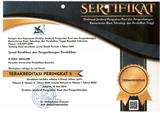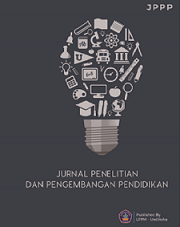Multiplication E-Module Media to Improve Cognitive Ability of First Grade Elementary School Students
DOI:
https://doi.org/10.23887/jppp.v7i3.67081Keywords:
Development, Multiplication E-Module, Cognitive AbilityAbstract
In this digital era there are still many schools that have not used IT-based learning media, especially in the content of mathematics lessons on multiplication material. Even though mathematics is one of the subjects that must be achieved in elementary school education. Many students think mathematics is very difficult and complicated. This is because there are many ways to solve problems in everyday life that use calculations. This study aims to analyze the need for valid and practical media development and to analyze the effectiveness of media results for improving students' cognitive abilities. The type of research used in this research is Research and Development. The development of the multiplication e-module uses the Borg and Gall development model design. The data obtained from the media development needs questionnaire. Data analysis uses the Guttman scale. The results of the study showed that the multiplication e-module media is needed to improve the cognitive abilities of second grade elementary school students. The results of the media validity test obtained results that were very feasible to use. While the results of the practicality test of teachers and students obtained very practical results. While the results of the effectiveness test showed that the increase in cognitive abilities in the experimental class was higher than the control class.
References
Abdullah, F., Ward, R., & Ahmed, E. (2016). Investigating the influence of the most commonly used external variables of TAM on students’ Perceived Ease of Use (PEOU) and Perceived Usefulness (PU) of e-portfolios. Computers in Human Behavior, 63, 75–90. https://doi.org/https://doi.org/10.1016/j.chb.2016.05.014. DOI: https://doi.org/10.1016/j.chb.2016.05.014
Aufa, M. N., Rusmansyah, R., Hasbie, M., Jaidie, A., & Yunita, A. (2021). The Effect of Using e-module Model Problem Based Learning (PBL) Based on Wetland Environment on Critical Thinking Skills and Environmental Care Attitudes. Jurnal Penelitian Pendidikan IPA, 7(3), 401–407. https://doi.org/10.29303/jppipa.v7i3.732. DOI: https://doi.org/10.29303/jppipa.v7i3.732
Bosica, J., Pyper, J. S., & MacGregor, S. (2021). Incorporating problem-based learning in a secondary school mathematics preservice teacher education course. Teaching and Teacher Education, 102, 103335. https://doi.org/10.1016/j.tate.2021.103335. DOI: https://doi.org/10.1016/j.tate.2021.103335
Cahyono, B. Y., Mukminatien, N., & Amrina, R. (2016). Indonesian Students Writing Proficiency in Using Complex Sentence. International Journal on Studies in English Language and Literature (IJSELL), 4(9), 22–32. https://www.researchgate.net/profile/Bambang-Cahyono-3/publication/311707316.
Dennis, M. S., Sharp, E., Chovanes, J., Thomas, A., Burns, R. M., Custer, B., & Park, J. (2016). A meta-analysis of empirical research on teaching students with mathematicslearning difficulties. Learning Disabilities Research and Practice, 1–13. https://doi.org/10.1111/ldrp.12107. DOI: https://doi.org/10.1111/ldrp.12107
Djamdjuri, D. S., Furqon, M., & Habibah, W. N. (2014). The Effects of Infographic to Enhance Students ’ Comprehension on Writing Descriptive Text. Indonesian Technology Enhanced Language Learning, 6(2), 57–63. https://online-journal.unja.ac.id/IJoLTE/article/view/23721.
Fauzi, L. M., Hayati, N., Satriawan, R., & Fahrurrozi, F. (2023). Perceptions of geometry and cultural values on traditional woven fabric motifs of the Sasak people. Jurnal Elemen, 9(1), 153–167. https://doi.org/10.29408/jel.v9i1.6873. DOI: https://doi.org/10.29408/jel.v9i1.6873
Fitriani, W., Komalasari, E., Adzhani, M., & Nelisma, Y. (2022). Development of Research-Based Modules in Educational Psychology Lectures to Improve Creativity. Jurnal Obsesi : Jurnal Pendidikan Anak Usia Dini, 6(4), 3050–3062. https://doi.org/10.31004/obsesi.v6i4.2314. DOI: https://doi.org/10.31004/obsesi.v6i4.2314
Jafar, A.F., R., Rusli, M., Dinar, I., Irwan, H., & Hastuty. (2020). The effectiveness of Video Assited Flipped Classroom Learning Model Implementation in Integral Calculus. Journal of Applied Science Engineering Technology and Education, 2(1), 97–103. https://doi.org/10.35877/454ri.asci2144. DOI: https://doi.org/10.35877/454RI.asci2144
Khaitova, N. F. (2021). History of Gamification and Its Role in the Educational Process. International Journal of Multicultural and Multireligious Understanding, 8(5), 212. https://doi.org/10.18415/ijmmu.v8i5.2640. DOI: https://doi.org/10.18415/ijmmu.v8i5.2640
Pallant, J. (2016). SPSS Survival Manual: A Step by Step Guide to Data Analysis Using IBM SPSS. Open University Press.
Patel, S. R., Margolies, P. J., Covell, N. H., Lipscomb, C., & Dixon, L. B. (2018). Using Instructional Design, Analyze, Design, Develop, Implement, and Evaluate, to Develop e-Learning Modules to Disseminate Supported Employment for Community Behavioral Health Treatment Programs in New York State. Frontiers in Public Health, 6. https://doi.org/10.3389/fpubh.2018.00113. DOI: https://doi.org/10.3389/fpubh.2018.00113
Perdana, F. A., Sarwanto, S., Sukarmin, S., & Sujadi, I. (2017). Development of e-module combining science process skills and dynamics motion material to increasing critical thinking skills and improve student learning motivation senior high school. International Journal of Science and Applied Science: Conference Series, 1(1), 45. https://doi.org/10.20961/ijsascs.v1i1.5112. DOI: https://doi.org/10.20961/ijsascs.v1i1.5112
Putri, W. F., & Irwan. (2019). Validity of learning devices mathematical based on quantum teaching and learning model for improving critical thinking. Journal of Physics: Conference Series, 1317(1). https://doi.org/10.1088/1742-6596/1317/1/012137. DOI: https://doi.org/10.1088/1742-6596/1317/1/012137
Samerkhanova, E. K., & Imzharova, Z. U. (2018). Organizational and pedagogical conditions for forming the readiness of future teachers for project activities in the context of Digitalization of education. Vestnik of Minin University, 6(2). https://doi.org/10.26795/2307-1281-2018-6-2-2. DOI: https://doi.org/10.26795/2307-1281-2018-6-2-2
Spante, M., Hashemi, S. S., Lundin, M., & Algers, A. (2018). Digital competence and digital literacy in higher education research: Systematic review of concept use. Cogent Education, 5(1), 1519143. https://doi.org/10.1080/2331186X.2018.1519143. DOI: https://doi.org/10.1080/2331186X.2018.1519143
Sriyanti, I., Almafie, M. R., Marlina, L., & Jauhari, J. (2021). The effect of Using Flipbook-Based E-modules on Student Learning Outcomes. Kasuari: Physics Education Journal (KPEJ), 3(2), 69–75. https://doi.org/10.37891/kpej.v3i2.156. DOI: https://doi.org/10.37891/kpej.v3i2.156
Sucahyo, E., Kartono, & Mulyono. (2021). Mathematical Understanding and Self Confidence of Elementary School with Realistic Mathematics Education Model. Journal of Primary Education, 10(3), 308–322. https://doi.org/10.15294/JPE.V10I3.49059.
Sugiharni, G. A. D., Setiasih, N. W., Mahendra, I., Ardana, I., & Divayana, D. G. H. (2018). Development of alkin model instruments as evaluation tools of blended learning implementation in discrete mathematics course on STIKOM Bali. Journal of Theoretical and Applied Information Technology, 96(17), 5803–5818. http://repo.mahadewa.ac.id/207.
Sugiyarto, A. W., Azizah, N. H., & Irsyad, A. N. (2018). Mathematics Learning Media With Augmented Reality ( AR ) Based On Android Mobile Application. The 2nd International Conference on Informatics for Development. https://www.researchgate.net/profile/Aditya-Sugiyarto-2/publication/335639768.
Sulistiani, S., Kartimi, K., & Sahrir, D. C. (2022). E-modules with Android Appy Pie Based on Socio-Scientific Issues to Improve Students’ Critical Thinking Skills. Journal of Education Technology, 6(2). https://doi.org/10.23887/jet.v6i2.44817. DOI: https://doi.org/10.23887/jet.v6i2.44817
Tytler, R., & Prain, V. (2022). Interdisciplinary mathematics and science - a guided inquiry approach to enhance student learning. Teaching Science, 68(1), 31–43. https://doi.org/10.3316/informit.362070229925660.
Utami, R. W., & Wutsqa, D. U. (2017). Analisis Kemampuan Pemecahan Masalah Matematika dan Self-Efficacy Siswa SMP Negeri di Kabupaten Ciamis. Jurnal Riset Pendidikan Matematika, 4(2), 166–175. https://doi.org/10.21831/jrpm.v4i2.14897. DOI: https://doi.org/10.21831/jrpm.v4i2.14897
Winarno, A., Fedin, M. Y. A., & Salleh, N. H. M. (2022). the Effect of Technological Literacy, Learning Facility, and Family Environment on Students’ Learning Motivation. Jurnal Pendidikan: Teori, Penelitian, Dan Pengembangan, 7(7), 246. https://doi.org/10.17977/jptpp.v7i7.15404. DOI: https://doi.org/10.17977/jptpp.v7i7.15404
Wulandari, F., Yogica, R., & Darussyamsu, R. (2021). Analisis Manfaat Penggunaan E-Modul Interaktif Sebagai Media Pembelajaran Jarak Jauh Di Masa Pandemi Covid-19. Khazanah Pendidikan, 15(2), 139. https://doi.org/10.30595/jkp.v15i2.10809. DOI: https://doi.org/10.30595/jkp.v15i2.10809
Wulandari, M. R., & Iriani, A. (2018). Pengembangan Modul Pelatihan Pedagogical Content Knowledge (PCK) Dalam Meningkatkan Kompetensi Profesional dan Kompetensi Pedagogik Guru Matematika SMP. Kelola: Jurnal Manajemen Pendidikan, 5(2), 177–189. https://doi.org/10.24246/j.jk.2018.v5.i2.p177-189. DOI: https://doi.org/10.24246/j.jk.2018.v5.i2.p177-189
Yasin, N. M., & Ong, M. H. (2020). A blended learning model of technology access and technical self-efficacy: Multiple mediator effects on student readiness. Journal of Advanced Research in Dynamical and Control Systems, 12(3). https://doi.org/10.5373/JARDCS/V12I3/20201220. DOI: https://doi.org/10.5373/JARDCS/V12I3/20201220
Yu, J., Kreijkes, P., & Salmela-Aro, K. (2022). Students’ growth mindset: Relation to teacher beliefs, teaching practices, and school climate. Learning and Instruction, 80, 101616. https://doi.org/10.1016/j.learninstruc.2022.101616. DOI: https://doi.org/10.1016/j.learninstruc.2022.101616
Yulando, S., Sutopo, & Chi., T. F. (2019). Electronic Module Design and Development: An Interactive Learning. American Journal of Educational Research, 7(10). https://doi.org/10.12691/education-7-10-4. DOI: https://doi.org/10.12691/education-7-10-4
Zahra, S. T., & Saleem, S. (2021). The development of a family cohesion scale: A preliminary validation. FWU Journal of Social Sciences, 15(1), 120–131. https://doi.org/10.51709/19951272/spring2021/15-10. DOI: https://doi.org/10.51709/19951272/spring2021/15-10
Downloads
Published
How to Cite
Issue
Section
License
Copyright (c) 2023 Niken Amanda

This work is licensed under a Creative Commons Attribution-ShareAlike 4.0 International License.
Authors who publish with the Jurnal Penelitian dan Pengembangan Pendidikan agree to the following terms:
- Authors retain copyright and grant the journal the right of first publication with the work simultaneously licensed under a Creative Commons Attribution License (CC BY-SA 4.0) that allows others to share the work with an acknowledgment of the work's authorship and initial publication in this journal.
- Authors are able to enter into separate, additional contractual arrangements for the non-exclusive distribution of the journal's published version of the work (e.g., post it to an institutional repository or publish it in a book), with an acknowledgment of its initial publication in this journal.
- Authors are permitted and encouraged to post their work online (e.g., in institutional repositories or on their website) prior to and during the submission process, as it can lead to productive exchanges, as well as earlier and greater citation of published work. (See The Effect of Open Access)







